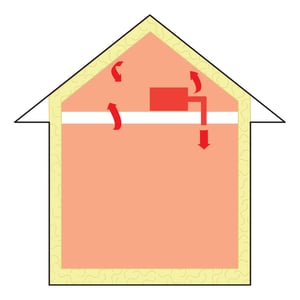Pros And Cons Of Unvented Attic

Making the attic a conditioned space means the space will be the same temperature as the rest of your home.
Pros and cons of unvented attic. The pros unventilated attics are common where roof assemblies are complex and it s difficult to create a sealed ceiling plane. This could actually penalize a house under leed h air sealing the ceiling is not necessary attic hatches do not need to be insulated and gasketed. This reduces latent air conditioning loads and provides further reductions in energy consumption. Pros of building the sealed attic.
This is especially true if you plan to install any ducts in your attic. The hot humid air belongs outdoors and you need an air barrier between the hot humid air and the interior of your house as well as your attic. These roofs can lower your heating costs in the winter. This air seal will help to make your home more energy efficient.
Poorly insulated ducting can cause heat loss in colder months and the loss of conditioned air in the summer in vented attics. No roof venting to install complex roof are inherently difficult to vent sealing may be the solution may increase the usable area of a house. A fundamental requirement of an unvented attic assembly is the use of air impermeable insulation on the underside of the unvented roof to prevent air infiltration and exclude airborne moisture from the attic. Adding unvented attic insulation like spray foam seals the building envelope and stops airflow.














































